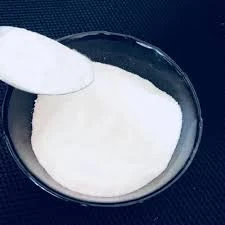
නොවැ. . 16, 2024 11:35 Back to list
what is hydroxyethyl cellulose
What is Hydroxyethyl Cellulose?
Hydroxyethyl cellulose (HEC) is a non-ionic, water-soluble polymer derived from cellulose, a natural polymer that is the main structural component of the cell walls of plants. As a type of modified cellulose, HEC is produced through the reaction of ethylene oxide with cellulose, leading to the introduction of hydroxyethyl groups into the cellulose structure. This modification enhances the solubility in water and improves the properties of cellulose for a variety of applications in different fields.
Chemical Structure and Properties
The chemical formula for hydroxyethyl cellulose is (C2H6O2)n, where n indicates the degree of polymerization. The hydroxyethyl groups impart specific characteristics to HEC, such as increased solubility in water at various temperatures. This solubility is crucial in many applications where a thickening agent or a stabilizer is required. HEC is known for its excellent chemical stability and is resistant to degradation by heat, light, and alkaline conditions.
HEC appears as a white, odorless powder and is generally available in various viscosities, allowing for its formulation in numerous products. Its molecular weight can be adjusted during the production process to suit specific applications, making HEC a versatile ingredient.
Applications of Hydroxyethyl Cellulose
Hydroxyethyl cellulose finds utility across various industries, such as pharmaceuticals, cosmetics, food, and construction
. Here are some notable applications1. Pharmaceuticals In the pharmaceutical industry, HEC serves as a thickening agent in topical formulations, such as creams and gels. It enhances the viscosity, stability, and spreadability of these products. Additionally, it is used in controlled-release drug formulations, where it helps modulate the release rate of active ingredients.
2. Cosmetics The cosmetic industry extensively uses HEC as a gelling agent and thickener in products such as shampoos, conditioners, lotions, and creams. Its ability to create a smooth texture without excessive greasiness makes it a preferred choice for formulating products that require a pleasant sensory feel.
what is hydroxyethyl cellulose

3. Food Industry In foods, HEC can act as a stabilizer and thickener. It is often added to sauces, dressings, and other processed foods to improve texture and mouthfeel. As it is derived from natural cellulose, it is considered safe for consumption and is compliant with food safety regulations.
4. Construction Hydroxyethyl cellulose is also utilized in construction materials, such as tile adhesives, drywall compounds, and paints. It improves the workability and application of these materials, allowing for extended open time and better adhesion properties.
5. Personal Care and Hygiene Products Beyond cosmetics, HEC is frequently found in personal care items, including hand sanitizers, lotions, and antibacterial gels. Its thickening properties ensure that these products can be easily applied and have a pleasing viscosity.
Advantages of Using Hydroxyethyl Cellulose
The use of hydroxyethyl cellulose offers several advantages
- Versatility HEC can be used in various formulations across multiple industries due to its adjustable viscosity and compatibility with a wide range of ingredients. - Stability HEC shows excellent stability to heat and pH changes, making it suitable for both high and low pH formulations. - Non-toxic Being a cellulose derivative, HEC is considered non-toxic and safe, which is crucial for applications in sensitive areas like pharmaceuticals and food products. - Eco-friendliness As it is derived from natural cellulose, HEC is viewed as an environmentally friendly option compared to synthetic polymers.
Conclusion
In conclusion, hydroxyethyl cellulose is a multifunctional polymer with diverse applications, stemming from its unique properties and versatility. Its role in enhancing the texture, stability, and overall performance of a wide range of products makes it invaluable in many industries. As the demand for natural and effective ingredients continues to rise, hydroxyethyl cellulose is likely to maintain its significance for years to come.
-
tile-bonding-additives-for-stronger-bonds
NewsAug.22,2025
-
construction-grade-rdp-for-wholesale-needs
NewsAug.22,2025
-
trusted-wholesale-hec-partners
NewsAug.22,2025
-
hec-solutions-for-industrial-excellence
NewsAug.22,2025
-
construction-additives-need-hpmc-essentials
NewsAug.22,2025
-
hpmc-versatile-cellulose-ether-for-industries
NewsAug.22,2025







